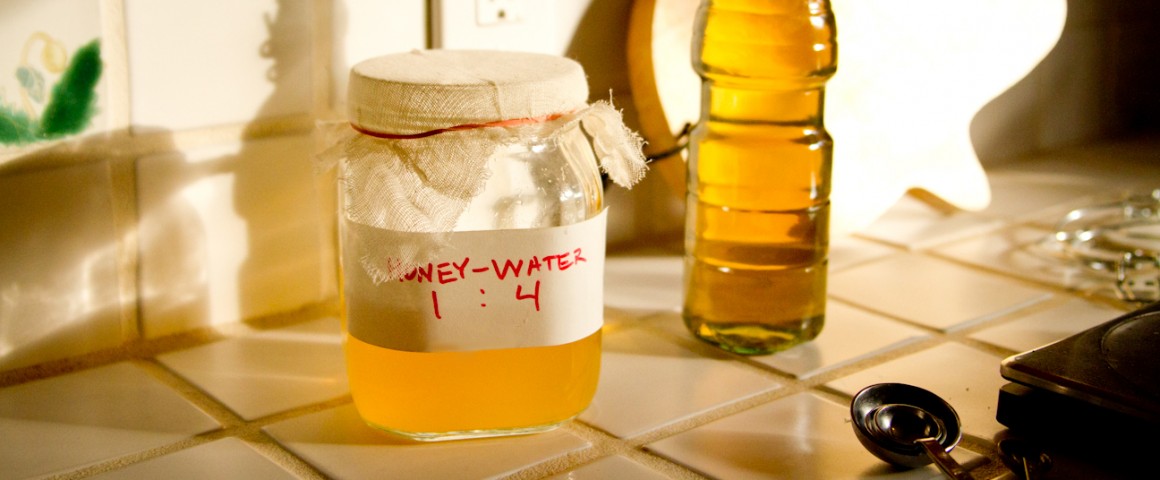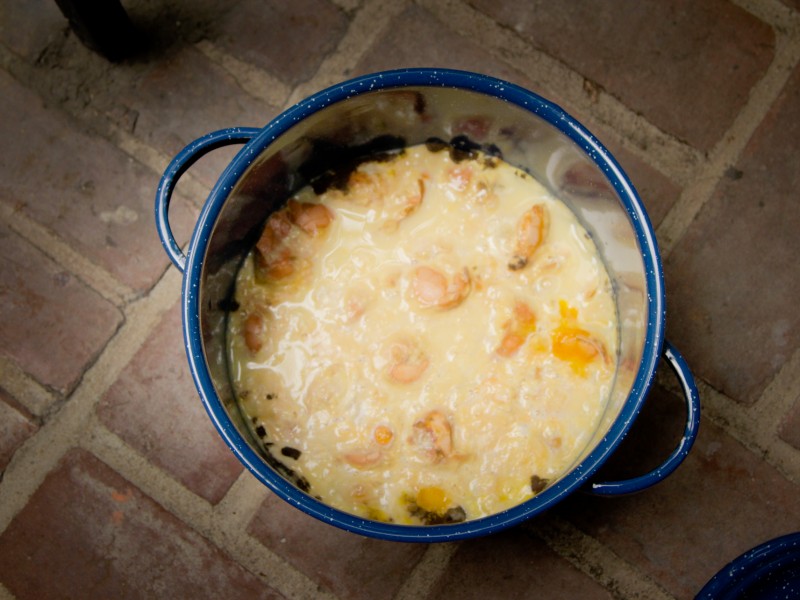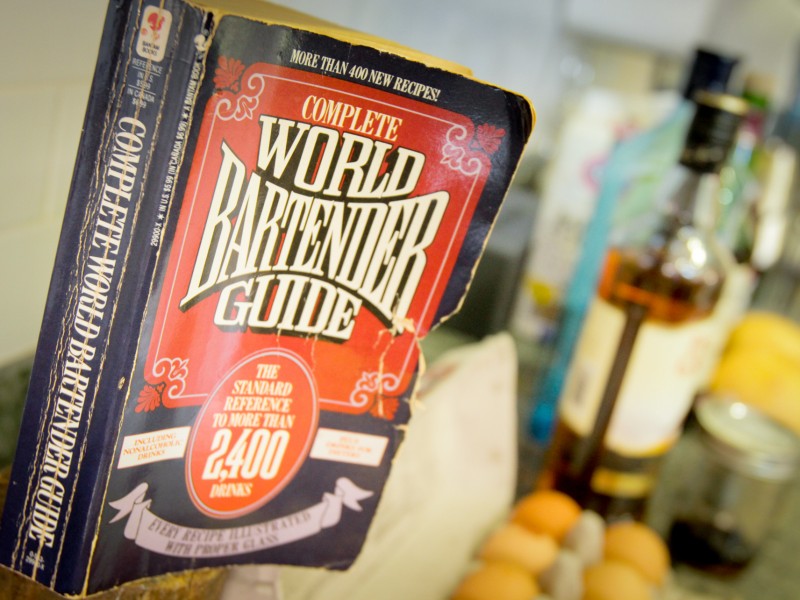Baffled by our mead conundrum, Brian and Eric decide to consult our respective experts:
From official The Rituals Consultant, Aunt Marjiann:
Hi, at long last, Eric,
One excuse for the delay in my reply is that I am flummoxed. I have no good advice to give you, which is a unique experience for me—to have to say, “I have no clue!” I have interviewed all my neighbors who make bread (relying at least partly on environmental yeast), and make alcoholic beverages. They use yeast, or starter. Starter might be a clue, now that I mention it…
My experience with making mead involved using brewer’s yeast. I tried champagne yeast, but I don’t like the flavor it imparts. Everyone I know who’s cooking up a batch of anything uses commercially available yeast. I haven’t found a soul who’s tried air-borne yeast to ferment anything, except cider… There are a dozen or so breweries around here, but I’m betting they use commercial yeast; at any rate, they’re not talking.
However, I understand that you are trying to go “old school”, or maybe “old world”. My first thought was: you’re living in L.A. Maybe all the modern by-products of human, mechanical and industrial gasses have displaced or killed any spontaneous yeasts that would otherwise hang out; maybe it gets too cold at night and the yeast dies. On the other hand, mold spores are everywhere and neither metro pollution nor cool overnights is going to deter them.
Aunt Marjiann then goes into eight comprehensive bullet points, broken down into the following subjects: Sanitizer, Ratios and Prep, Dirt=Spoilage, Inside/Outside, Kinds of Honey, Boiling, Alcohol Conversion, and Explosives (!). The “chapter” on boiling is particularly illuminating.
From Brian’s source, a professional brewer specializing in mead:
Brian,
It sounds like the recipe uses the wild yeast in the air for fermentation. I personally would not try it. There are many types of yeast in the air and most of them won’t produce a good tasting mead. But if you do give it a try, let me know how it turns out.
Cheers,
Brad
Everyone (except for Aunt Marjiann) thinks making the mead with wild yeast is a terrible idea. “Just don’t do it” is a refrain we’ve heard more than once. I guess that is what makes it a refrain. Most people don’t realize that “Just Don’t Do It” was actually the long-forgotten runner-up in Nike’s 1988 slogan contest. We do, however. And we are here to revive this slogan because it gives us fuel. And not motivation, I mean. I’m talking about actual fuel. Perhaps T-shirts need to be made.



'No to the Mead' have 3 comments
May 26, 2015 @ 3:03 pm TStew
Heya fellas, really enjoying the blog/thing you got goin here, keep it up!
Had a couple thoughts about that mead…Lemme just say, I like what you guys are doing here! I think it’s great idea trying to cultivate a wild yeast for mead. I know some people said don’t do it. But that’s silly, you should definitely do it. The reasons against it have to do with repeatability/reliability I’d guess, more so than actual safety. So why not?! After all this is literally Mesolithic technology. People have been doing it this way for two hundred centuries. In fact most wineries still use wild yeasts that are endemic in their vineyards to start fermentation. It’s easy, it’s pretty safe, and as my pal Richard says, “Hey, you know, they were making this stuff in castles.”
Alright, firstofly I think you guys will get better results if you do a little prep before your next attempt. To whit, make a starter. A starter colony of yeast made beforehand will get fermentation going faster and give the yeast a better chance to outcompete any other microbes and nasties that cruise past. Several ounces of a thin (think 1:6 honey/water) mixture in an open jar should be enough food to get a starter going. Now you need the yeast, which are, on Earth, basically e v e r y w h e r e. A handful of unwashed raisins, or leaves from a tree outside, or even a few tufts of cat hair will be so covered in yeast that with this lil’ bit of honey you should be able to see some bubblin’ action within hours.
Second, although honey is full of food for yeast, it’s kind of low on nutrients that yeast need to be happy. Nutrients added to the mixture can be as simple as a couple of tsps of a commercial nutrient/energizer from the LHBS. Or old school nutrient additions like a handful of chopped up and parboiled raisins, or a tbs of tomato purée.
The only other procedural thing I’d mention is something I think you guys touched on already, the honey/water ratio. I’d try it next time with the ratios reversed. So something like 1:4 honey to water will probly suit ya better.
Added together with a starter and a little bit of nutrition, y’all ought to be cranking out Viking wine in no time.
Looking forward to hearing about your next attempt!
T
May 27, 2015 @ 2:48 pm Eric D. Anderson
Thanks for the support, TStew, and for your expert advice! We are not finished with the mead, just yet, and are looking forward to employing these tips. If Vikings could do it, then, well, so can we!
May 27, 2015 @ 5:59 pm Brian Christie
It’s always great to get positive feedback. This world has become too sanitized, too easy. We are trying to, as you put it, make what they used to make in castles or at least in someones barn in the early 1900’s. Vikings, immigrants with old world smarts, kind of the same thing.
I thank you sir for all the feedback and input. I think we will be putting this new found knowledge to use. The only thing is the ratio of honey to water. We are trying to stick to the books recipes as much as possible, which is an ungodly 2 quarts of honey to 12 ounces of boiling water. Once I isolate some backyard yeast we’ll look into making a more rational mead with the same yeast as well.
Till next time. Stay Ritual.